Introduction
After our very first month of production, in July, we already knew that solar panels were making a difference: we even ended up with a small surplus and sold almost twice as much electricity as we had bought. Here now the August 2025 figures.
August 2025 was our first full month with both solar production and our new automation changes in place. The results? 784 kWh of solar power produced, only 57 kWh bought from the grid, and 302 kWh sold back. The household consumed a total of 539 kWh — of which 43% came directly from solar, 52% from the battery (mostly charged by solar), and only 5% was bought from the grid when neither solar nor the battery was available.
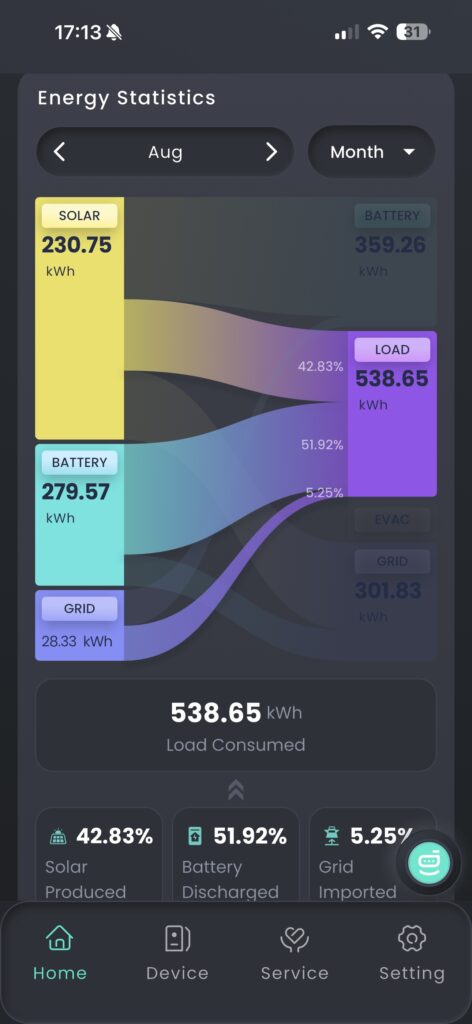
Production in August 2025
- Total solar power: 784.44 kWh
- Sold to the grid: 301.83 kWh
- Bought from the grid: 57.24 kWh
- Household consumption (LOAD): 538.65 kWh
- Used from the battery: 358.06 kWh
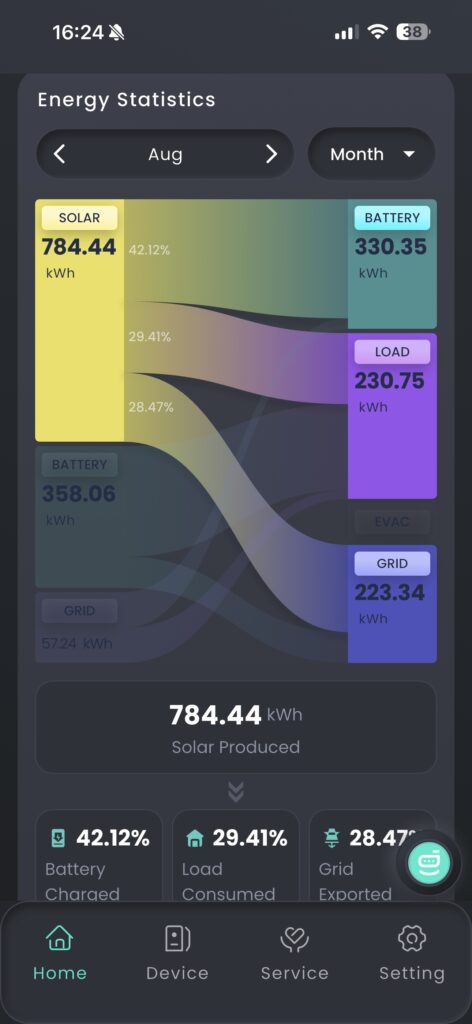
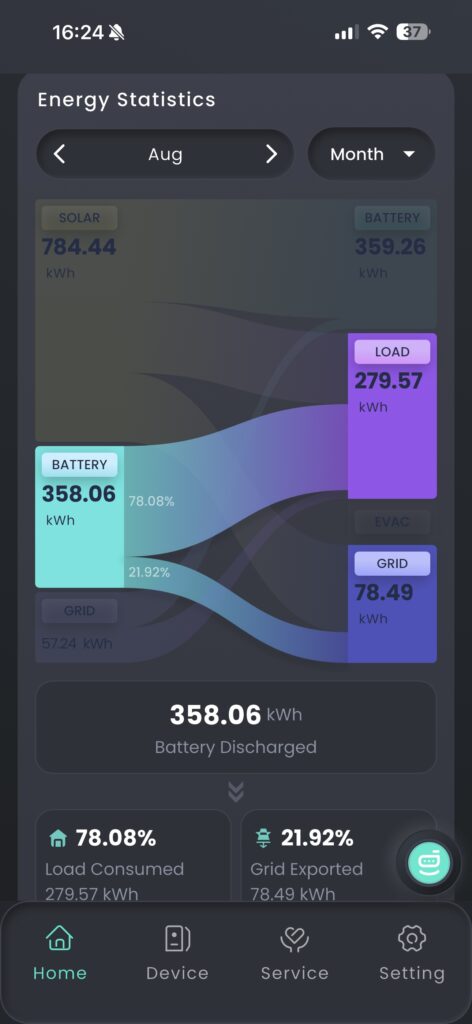
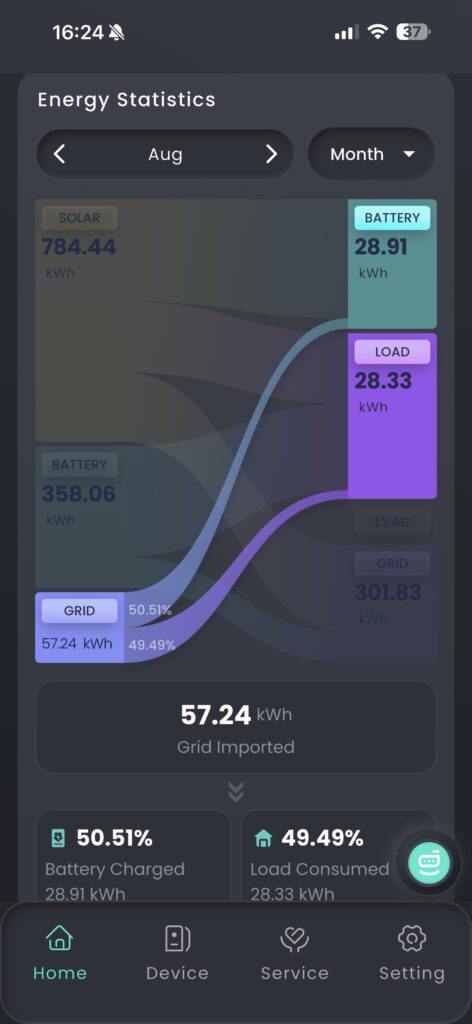
Balance Between Bought and Sold Electricity
Also in August, our house was a net exporter. We bought less than 60 kWh from the grid, while selling over 300 kWh back. That’s a huge contrast compared to previous years when our entire demand came from the grid.
Economy – What Did It Mean in SEK?
Bought electricity
- Spot price: 0.5506 SEK/kWh
- Taxes + grid fees: 0.77 SEK/kWh
- Total: 1.32 SEK/kWh
- 57.24 kWh → about 76 SEK
Sold electricity
- Compensation: 0.402 SEK/kWh
- Grid benefit (nätnytta): 0.0382 SEK/kWh
- Total: 0.44 SEK/kWh
- 301.83 kWh → about 133 SEK
Net effect
- Income from sales: ~133 SEK
- Cost of purchases: ~76 SEK
- Balance: +57 SEK surplus
Without solar, we would have had to buy the household’s entire 538.65 kWh × 1.32 SEK = about 711 SEK.
Real savings in August: ~768 SEK.
Reflection
August clearly shows the difference that a battery and smart automation make. Only 57 kWh was bought from the grid during the entire month, and this is easy to spot in the chart: almost every day we were fully self-sufficient. The few times we had to buy electricity coincided with cloudy days. Some graphs from Tibber show what is going on:
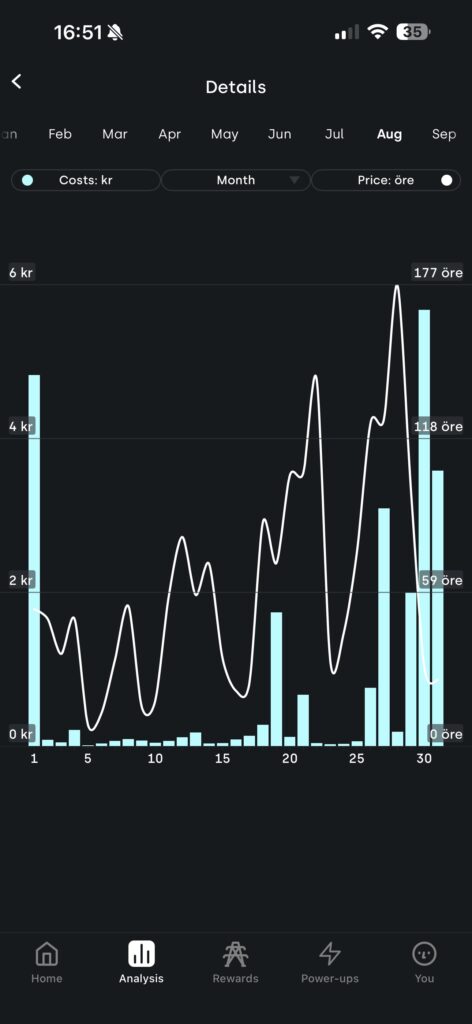
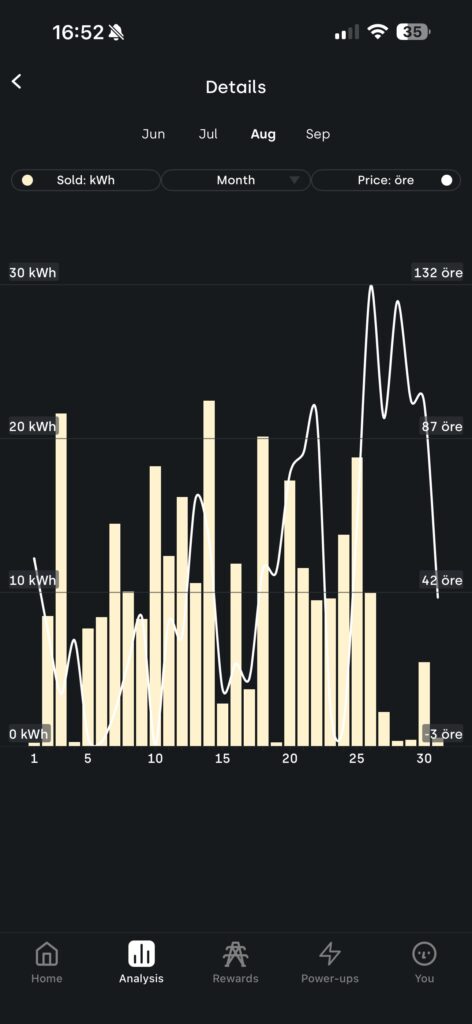
This is proof that the automation changes we made in July are already paying off. Dishwasher, washing machine, and charging are now consistently scheduled for sunny hours, which reduces grid dependence.
At the same time, it’s clear that self-consumption is the key. Every kilowatt-hour we use ourselves saves us much more than the one we sell. With the upcoming regulatory changes in 2026, this will become even more important.
Looking Ahead
Autumn is coming, with shorter days and lower production. We expect self-consumption to account for a larger share, while the total surplus sold to the grid will decrease. It will be interesting to see how our energy balance shifts in September and October.
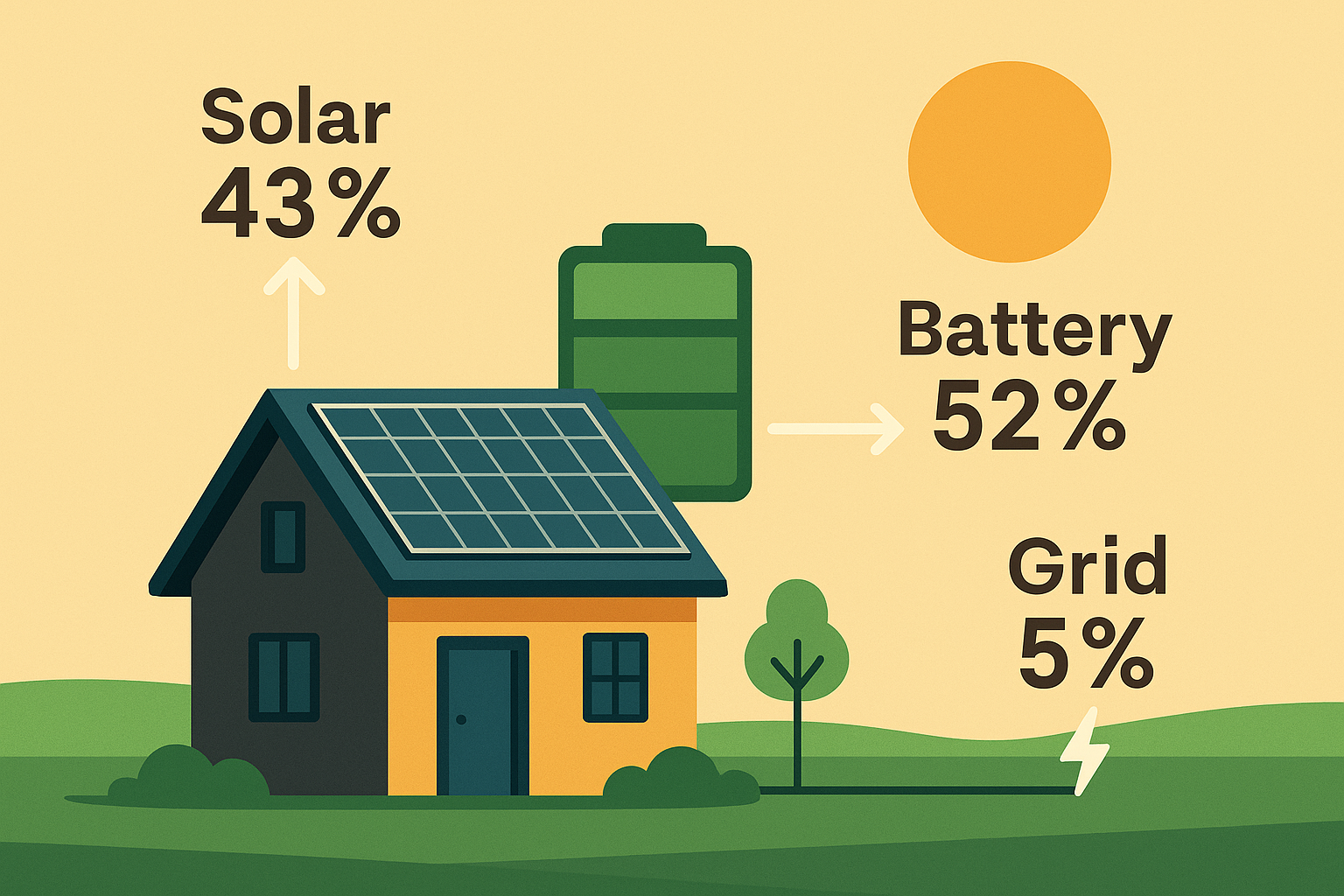
No responses yet